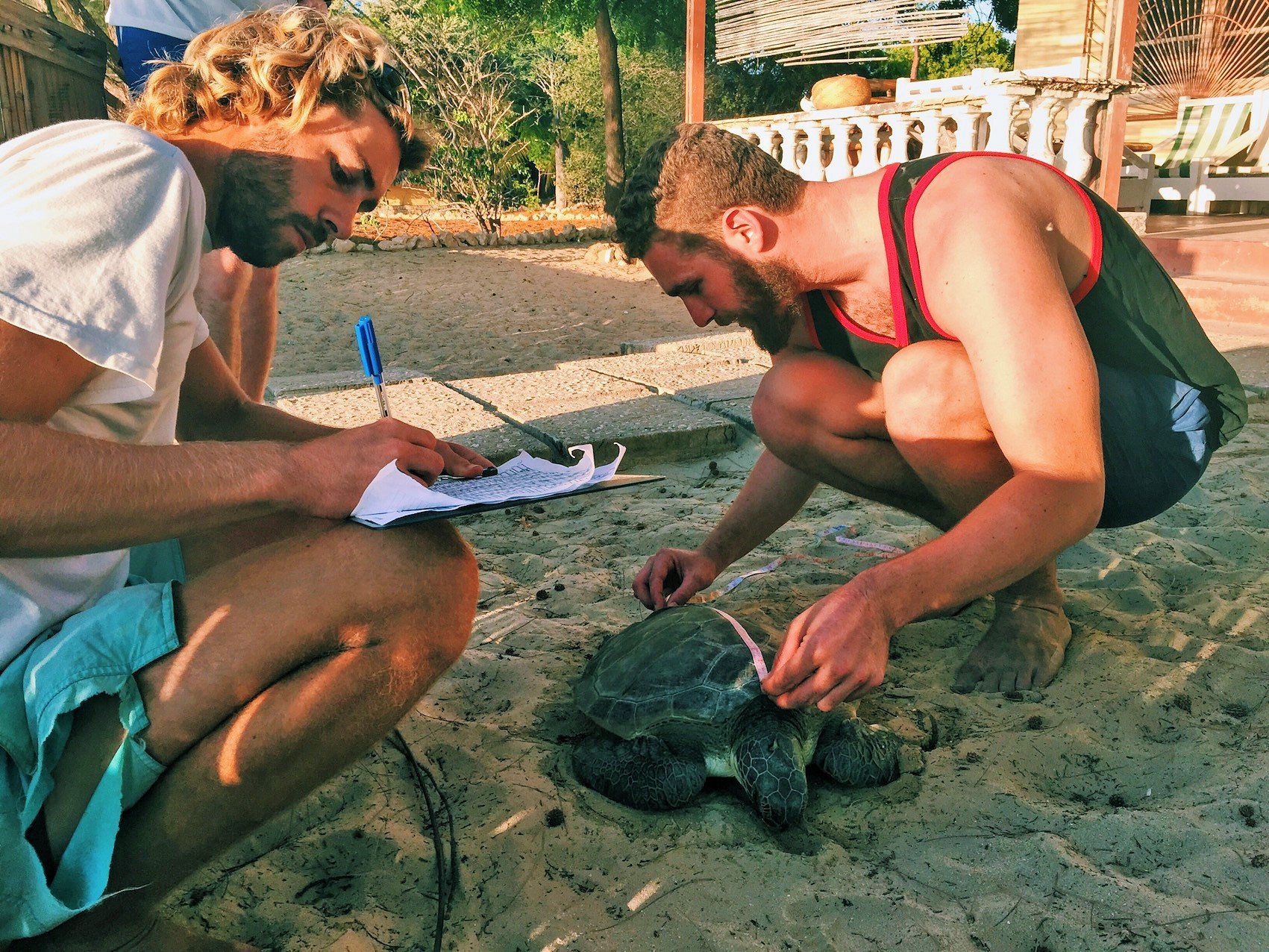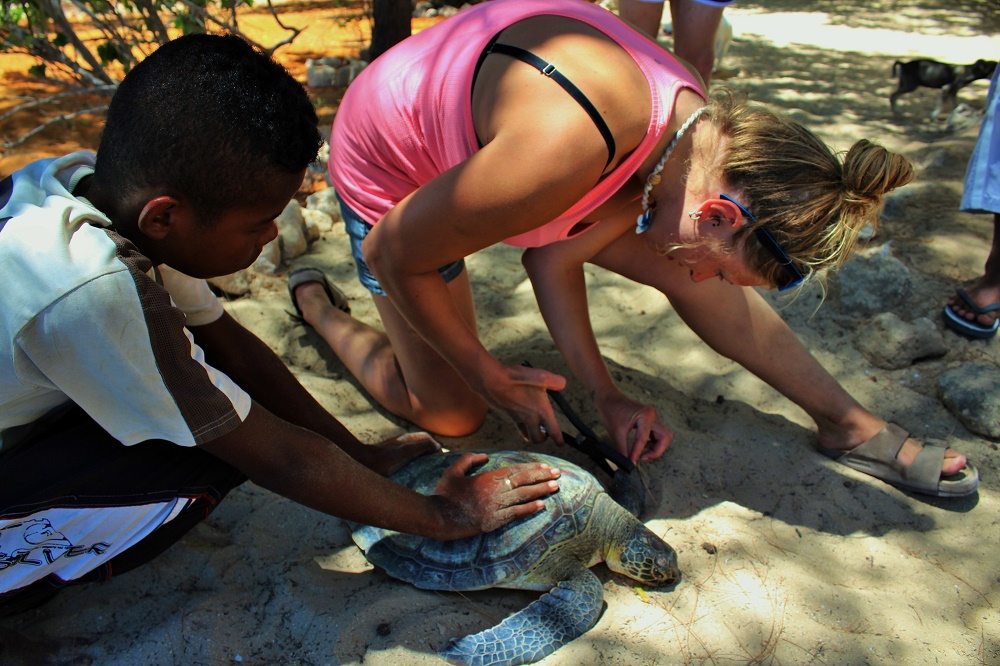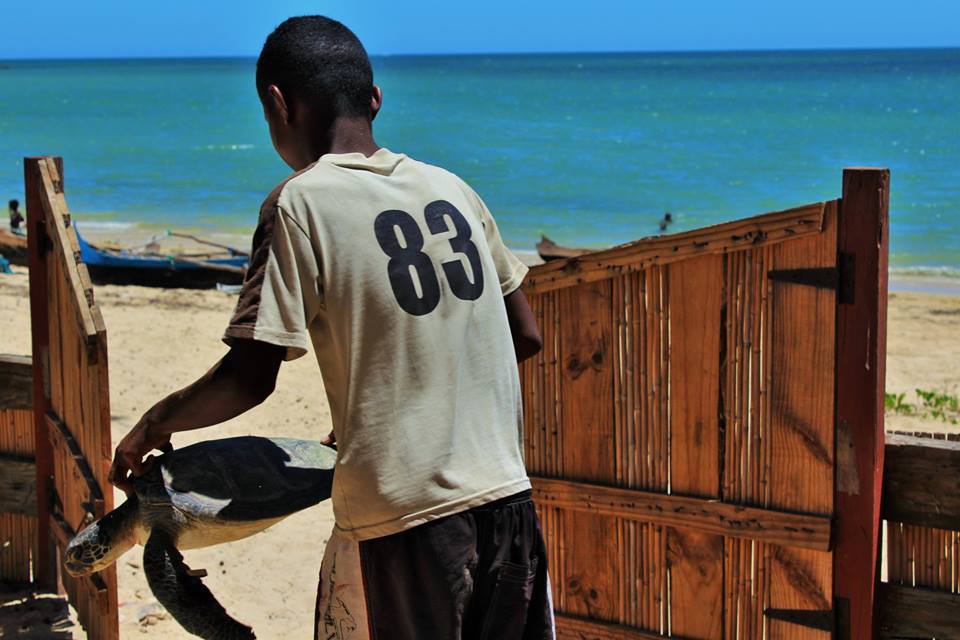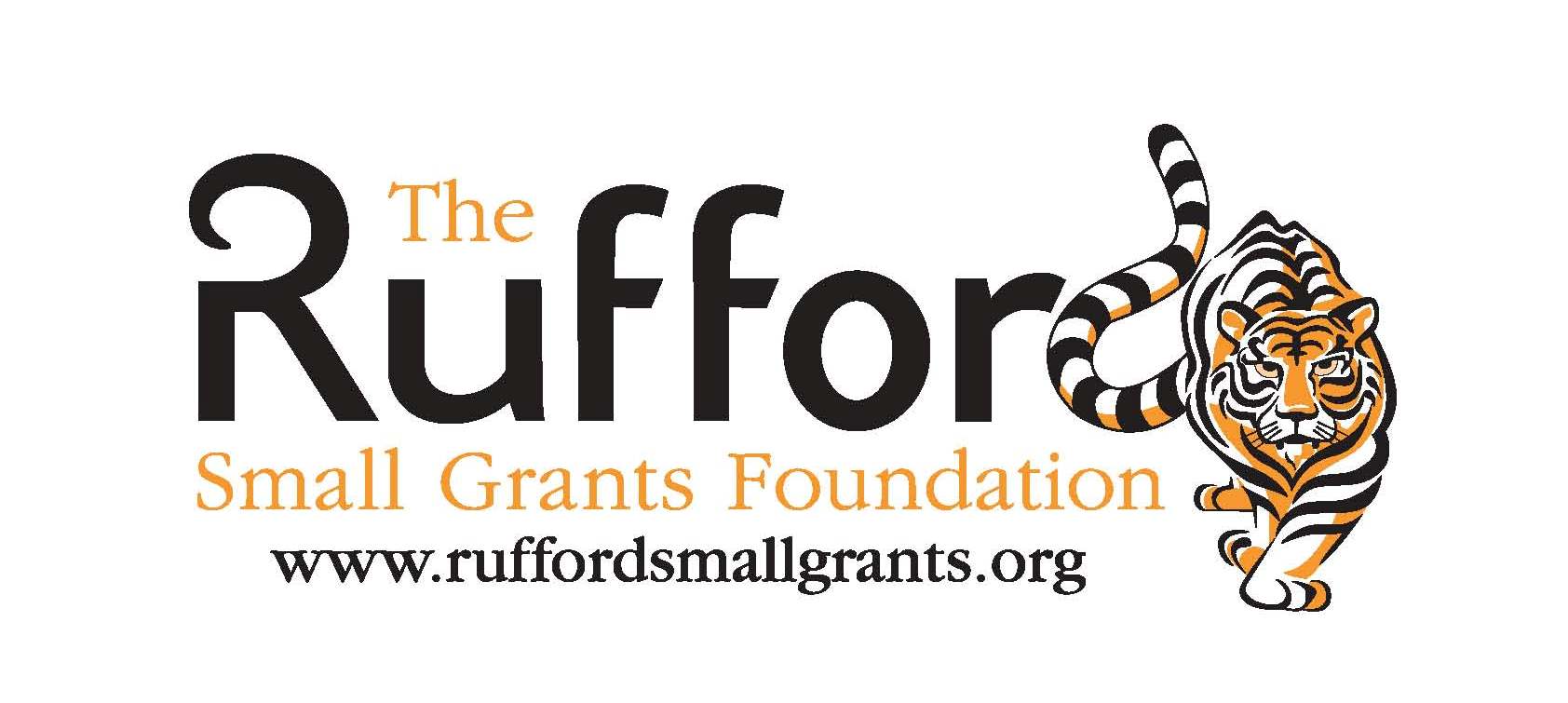World Honeybee Day
Honeybees have been a prominent topic in conservation news in recent years and with good cause. Bee populations globally are under threat and without them to pollinate flowers and crops we may not be able to eat the food we love in the future. For instance, crops like blueberries and cherries are 90% dependent on pollination by bees. If honeybees were to disappear completely we could lose the equivalent of one in every three bites of food (www.beesmatter.ca). There is no single cause for the disappearance of honeybees but general scientific opinion is that there are a number of causes for the decline including insecticides and a loss of countryside and green spaces to urban development (www.fastcoexist/honeybees).
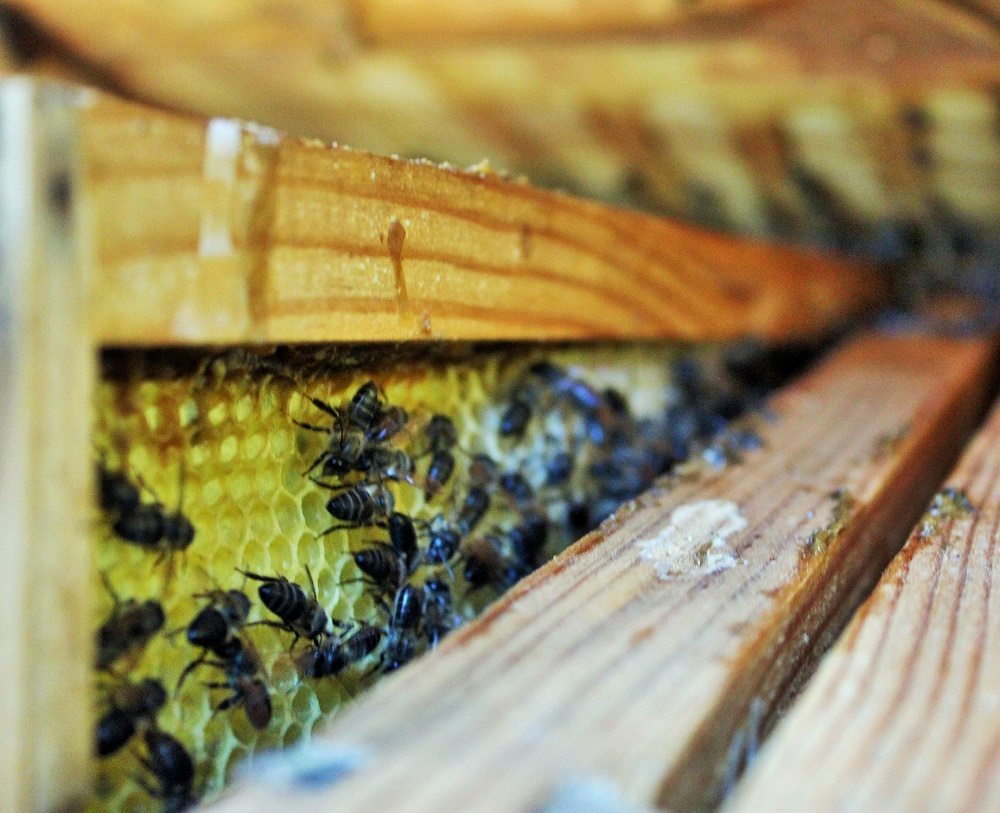
For this reason today, the 20th August, is World Honeybee Day, established to raise awareness of the importance of bees. Here in Madagascar bees are also important to sustainable development and even play their part in recycling. Wild honey hunters have, for centuries throughout Madagascar, hunted wild beehives and collected wild honey. There are many ways that this is done. Possibly the most macabre method is that used by tribes in the high plateau. Traditionally these people put the coffins of their dead in trees. Over time bees use the coffins as hives and produce honey in them. The people of the high plateau cannot eat the honey as it is fady (taboo) to do so. Instead they collect the honey and trade it with other groups for essentials (www.prezi.com).
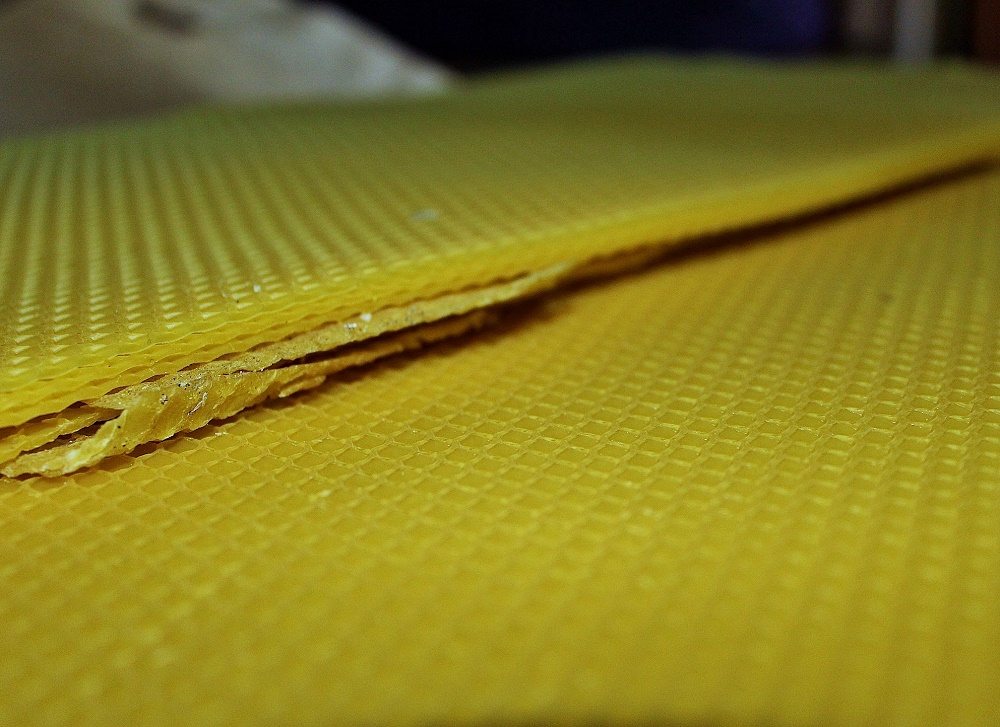
Usually honey is collected by wild honey hunters by finding a wild hive in a hole in a tree, smoking out the bees and placing the queen in a bamboo cage. The hunter can then take the honeycomb and honey. Unfortunately, the bees are not always left alive and therefore the practice is not sustainable. But there are currently a number of NGOs in Madagascar who have looked to the traditional place of honey in Malagasy life and gotten involved in beekeeping projects that are sustainable and are helping to alleviate poverty for beekeeping families. Our sister NGO Honko Mangrove Conservation and Education is one of the NGOs that is teaching and practicing apiculture or beekeeping. In the village of Ambondrolava, where Honko is based, there are currently two households involved in apiculture. Each hive produces approximately 10 litres of honey a year. Honey is sold for 10,000 Ariary per litre and therefore the potential income to the household is 100,000 Ariary per year (approximately £23). This is not a vast amount of money by anyone’s standards but it is a helpful supplement to the income of these households.
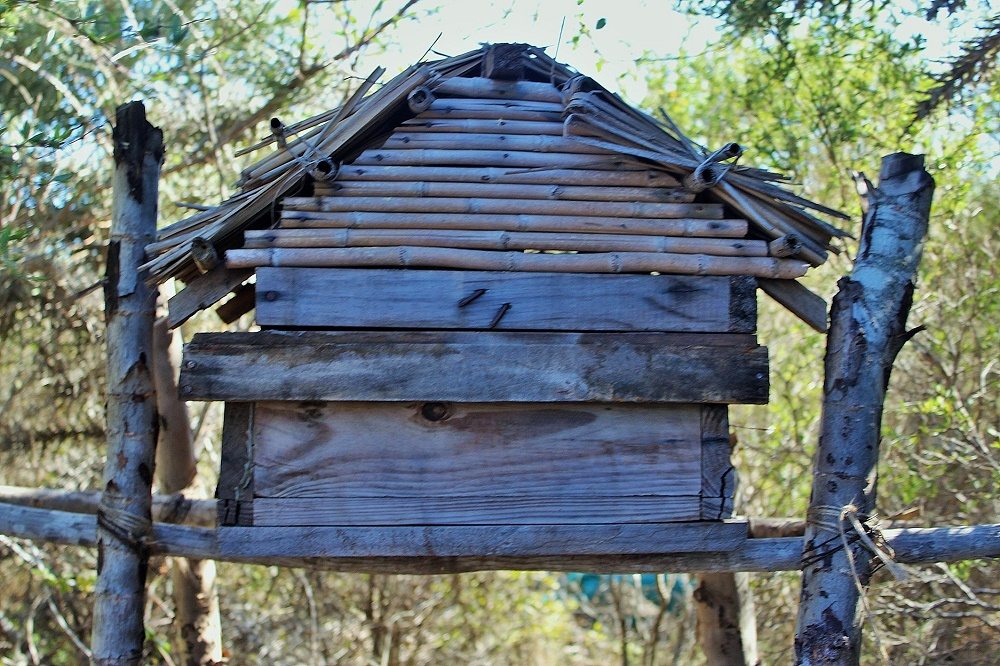
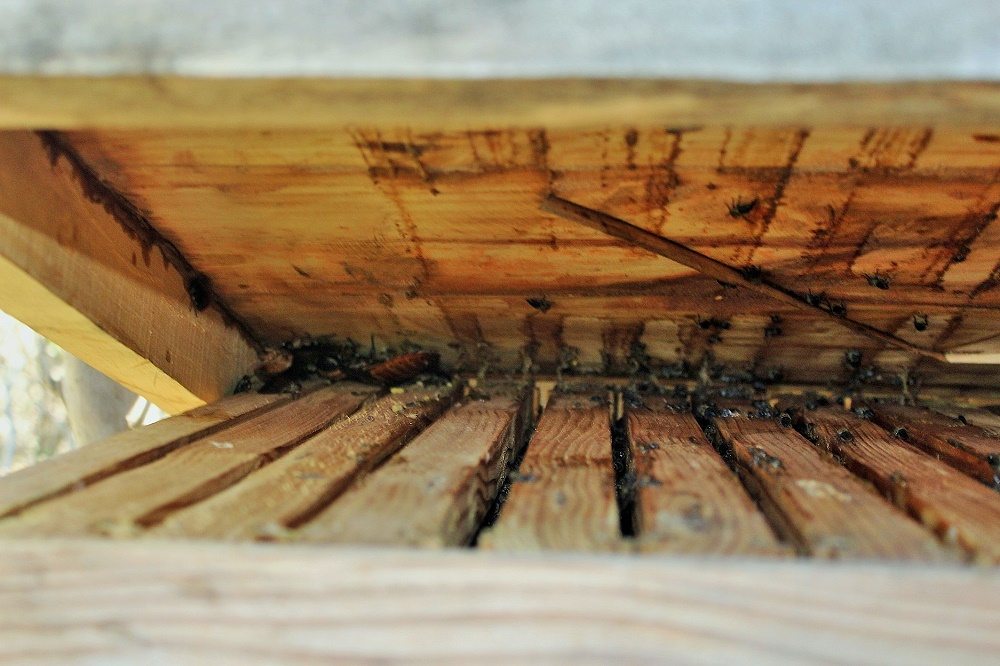
H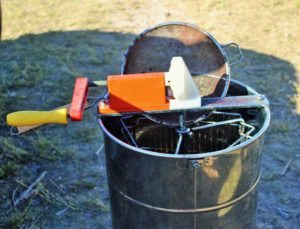 onko also have their own hive on site. They are currently populating the hive and it should be producing honey within a year. Hives are populated by using honeycomb created elsewhere and placing it in the new hive. The hive currently in use at Honko is of quite a complicated design and Honko has plans to begin using Kenyan beehives that are of a much simpler design and easier to extract honey from. The honey is extracted using a machine called an extractor in which the combs are spun, allowing the honey to be collected in a drum.
onko also have their own hive on site. They are currently populating the hive and it should be producing honey within a year. Hives are populated by using honeycomb created elsewhere and placing it in the new hive. The hive currently in use at Honko is of quite a complicated design and Honko has plans to begin using Kenyan beehives that are of a much simpler design and easier to extract honey from. The honey is extracted using a machine called an extractor in which the combs are spun, allowing the honey to be collected in a drum.
Honey and beekeeping also helps to deal with the thousands o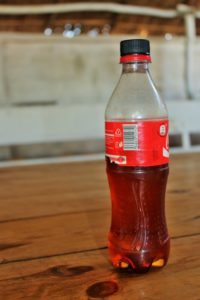 f plastic bottles used in Madagascar every day. Used bottles are refilled with honey and sold in markets and villages throughout the country. Of course, it’s not ideal to reuse plastic bottles containing PEP but it is an awful lot better than the alternative, which is burning all the plastic bottles that have only been used once or throwing them on the ground or in the sea. There is no refuse collection and no recycling points in most of Madagascar and so reusing something is the best way to prevent it becoming waste and very often pollution. Furthermore most people who sell honey probably cannot afford to buy the bottles they need. You often see children asking tourists for their empty bottles and most people touring the country or visiting national parks keep their empty bottles until they come across a group of children who want to recycle them. Please remember to do so if you visit or save them during your trip and drop them off at an NGO before you leave.
f plastic bottles used in Madagascar every day. Used bottles are refilled with honey and sold in markets and villages throughout the country. Of course, it’s not ideal to reuse plastic bottles containing PEP but it is an awful lot better than the alternative, which is burning all the plastic bottles that have only been used once or throwing them on the ground or in the sea. There is no refuse collection and no recycling points in most of Madagascar and so reusing something is the best way to prevent it becoming waste and very often pollution. Furthermore most people who sell honey probably cannot afford to buy the bottles they need. You often see children asking tourists for their empty bottles and most people touring the country or visiting national parks keep their empty bottles until they come across a group of children who want to recycle them. Please remember to do so if you visit or save them during your trip and drop them off at an NGO before you leave.
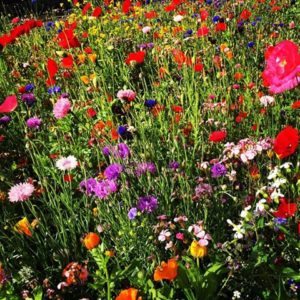 Closer to home there are a number of things you can do to help honeybee populations including planting bee-friendly wildflower seeds and allowing dandelions and clover to grow in your garden. Your garden, you and your family will also benefit if you stop using commercial pesticides, herbicides and fertilizers that are loaded with harmful chemicals that are very damaging to bees. Support local honeybee keepers by buying your honey locally. This not only supports your local economy but supports local beekeepers who tend to be more concerned with the health of their bees than large companies are. And please remember to recycle the container your honey comes in.
Closer to home there are a number of things you can do to help honeybee populations including planting bee-friendly wildflower seeds and allowing dandelions and clover to grow in your garden. Your garden, you and your family will also benefit if you stop using commercial pesticides, herbicides and fertilizers that are loaded with harmful chemicals that are very damaging to bees. Support local honeybee keepers by buying your honey locally. This not only supports your local economy but supports local beekeepers who tend to be more concerned with the health of their bees than large companies are. And please remember to recycle the container your honey comes in.
Article by RD Comms Officer Ivana Rubino

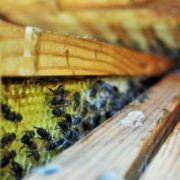
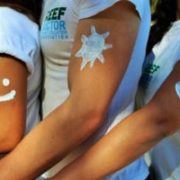
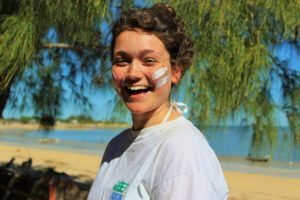 Sunscreen is an essential part of almost everyone’s holiday preparations. We choose a sunscreen that we can afford, that offers the right level of SPF protection and that comes in a spray, cream or oil depending on our preferences. But do we look at or even care about what’s actually in our sunscreen? Is your sunscreen giving you and your environment the best protection it can? When it comes to the sea your sunscreen could be letting you down. Any diver who learned to dive with a reputable organization knows that caring for our oceans and everything that lives in them is an essential part of learning to dive and continuing to dive. New divers learn that it’s vital to protect the underwater environment for future generations to visit. But even the most careful diver could be damaging coral reefs systems without even knowing it. Corals are vulnerable to many threats created by our modern world such as over fishing, rising sea temperatures, ocean acidification and run off from industry and agriculture. But corals are also being damaged by something much less obvious. Something each and every one of us can do our part to address. Sunscreen!
Sunscreen is an essential part of almost everyone’s holiday preparations. We choose a sunscreen that we can afford, that offers the right level of SPF protection and that comes in a spray, cream or oil depending on our preferences. But do we look at or even care about what’s actually in our sunscreen? Is your sunscreen giving you and your environment the best protection it can? When it comes to the sea your sunscreen could be letting you down. Any diver who learned to dive with a reputable organization knows that caring for our oceans and everything that lives in them is an essential part of learning to dive and continuing to dive. New divers learn that it’s vital to protect the underwater environment for future generations to visit. But even the most careful diver could be damaging coral reefs systems without even knowing it. Corals are vulnerable to many threats created by our modern world such as over fishing, rising sea temperatures, ocean acidification and run off from industry and agriculture. But corals are also being damaged by something much less obvious. Something each and every one of us can do our part to address. Sunscreen!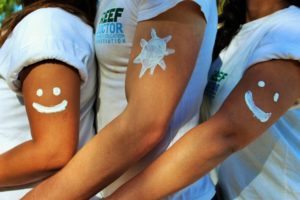 is a major contributing factor in widespread coral bleaching. Furthermore the chemical does not just kill the coral. It damages DNA in adult coral and deforms DNA in coral in the larval stage making it unlikely to form properly. Sadly this means that anytime you wear a sunscreen that contains oxybenzone or other harmful active ingredients and swim in waters that contain corals you are actively allowing the damaging chemical to come in contact with fragile corals. The Washington Post (2015) notes that ‘the equivalent of a drop of water in a half dozen Olympic sized swimming pools’ is enough to damage fragile coral reef systems. Just think how much sunscreen it takes to cover every tourist that visits a beach that has coral reefs nearby! A lot, right? Well, it is estimated that 14,000 tons of sunscreen ends up in coral reefs worldwide annually (Huffington Post). 14,000 TONS!!!!
is a major contributing factor in widespread coral bleaching. Furthermore the chemical does not just kill the coral. It damages DNA in adult coral and deforms DNA in coral in the larval stage making it unlikely to form properly. Sadly this means that anytime you wear a sunscreen that contains oxybenzone or other harmful active ingredients and swim in waters that contain corals you are actively allowing the damaging chemical to come in contact with fragile corals. The Washington Post (2015) notes that ‘the equivalent of a drop of water in a half dozen Olympic sized swimming pools’ is enough to damage fragile coral reef systems. Just think how much sunscreen it takes to cover every tourist that visits a beach that has coral reefs nearby! A lot, right? Well, it is estimated that 14,000 tons of sunscreen ends up in coral reefs worldwide annually (Huffington Post). 14,000 TONS!!!!
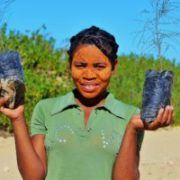
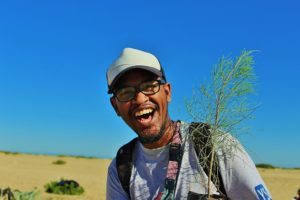 birthday celebrations. We’ve had the opportunity to work with the YSO on a few different projects recently including coral bleaching surveys, so we were very happy to be included in the celebrations. The YSO’s fifth birthday happened to coincide with World Day to Combat Desertification and Drought which has been commemorated every year since 1994 when the United Nations implemented the United Nations Convention to Combat Desertification (UNCCD). Both of these occasions meant that last Friday’s celebrations were important to a lot of people.
birthday celebrations. We’ve had the opportunity to work with the YSO on a few different projects recently including coral bleaching surveys, so we were very happy to be included in the celebrations. The YSO’s fifth birthday happened to coincide with World Day to Combat Desertification and Drought which has been commemorated every year since 1994 when the United Nations implemented the United Nations Convention to Combat Desertification (UNCCD). Both of these occasions meant that last Friday’s celebrations were important to a lot of people.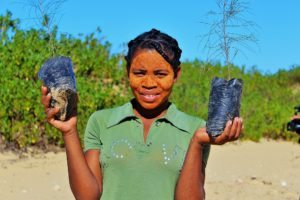 tection to the mangrove forests in Ambondrolava, where NGO Honko Conservation and Management and VOI Mamelo Honko are based, and in Ambotsike. However due to deforestation the motile dune system requires stabilization to preserve the barrier it provides. As the ReefDoctor team climbed out of the taxi brousse we could see that work was well underway. A line was forming in front of us through the field and to the edge of the water, made up of people from the nearby village of Songeritelo, YSO members, NGO Honko Conservation and Management and VOI Mamelo Honko, NGO Hunger Hilfe and GIZ –Page environmental magazine. We quickly joined the human chain and began passing Causina equisetifolia saplings, known in French as Filao, from the roadside down into the muddy banks where they were ferried across a stretch of water by pirogue. Once we had passed about 400 trees across, we all waded over and met the pirogues on the other side to unload all the trees and take them to the planting site.
tection to the mangrove forests in Ambondrolava, where NGO Honko Conservation and Management and VOI Mamelo Honko are based, and in Ambotsike. However due to deforestation the motile dune system requires stabilization to preserve the barrier it provides. As the ReefDoctor team climbed out of the taxi brousse we could see that work was well underway. A line was forming in front of us through the field and to the edge of the water, made up of people from the nearby village of Songeritelo, YSO members, NGO Honko Conservation and Management and VOI Mamelo Honko, NGO Hunger Hilfe and GIZ –Page environmental magazine. We quickly joined the human chain and began passing Causina equisetifolia saplings, known in French as Filao, from the roadside down into the muddy banks where they were ferried across a stretch of water by pirogue. Once we had passed about 400 trees across, we all waded over and met the pirogues on the other side to unload all the trees and take them to the planting site.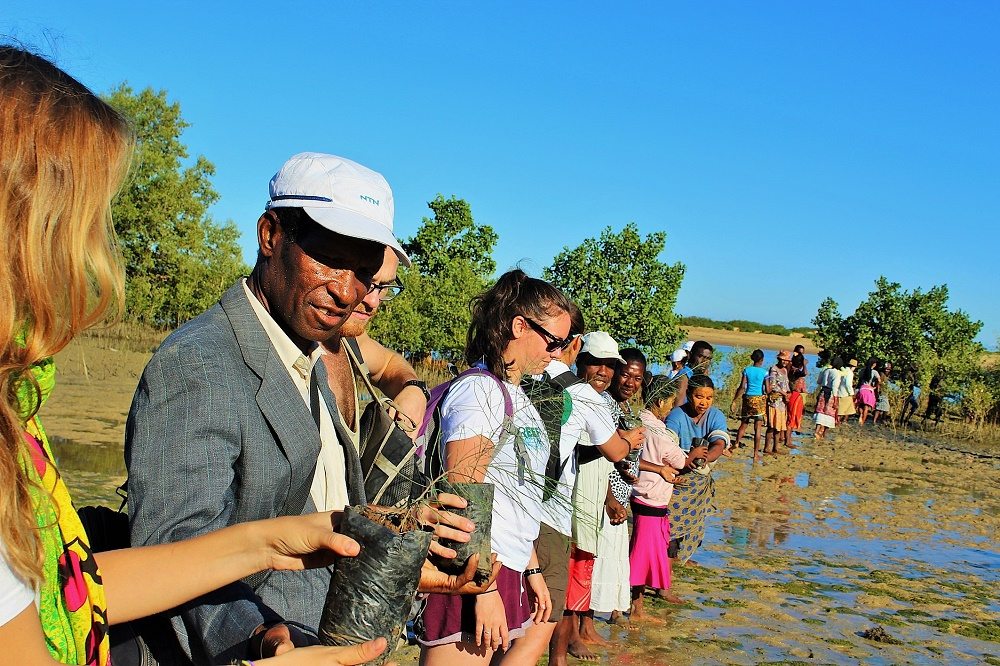
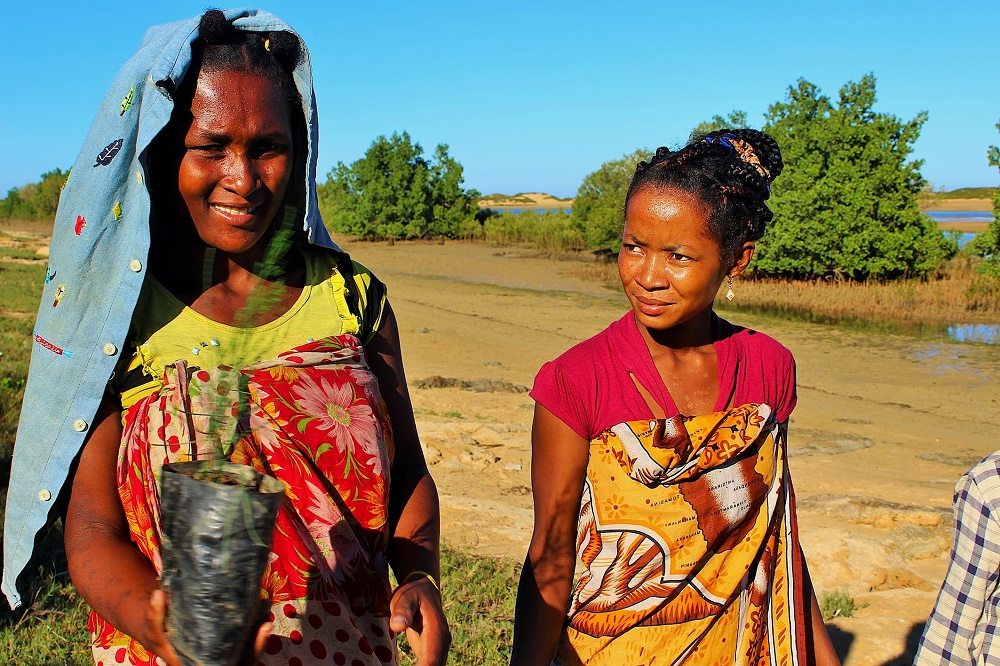
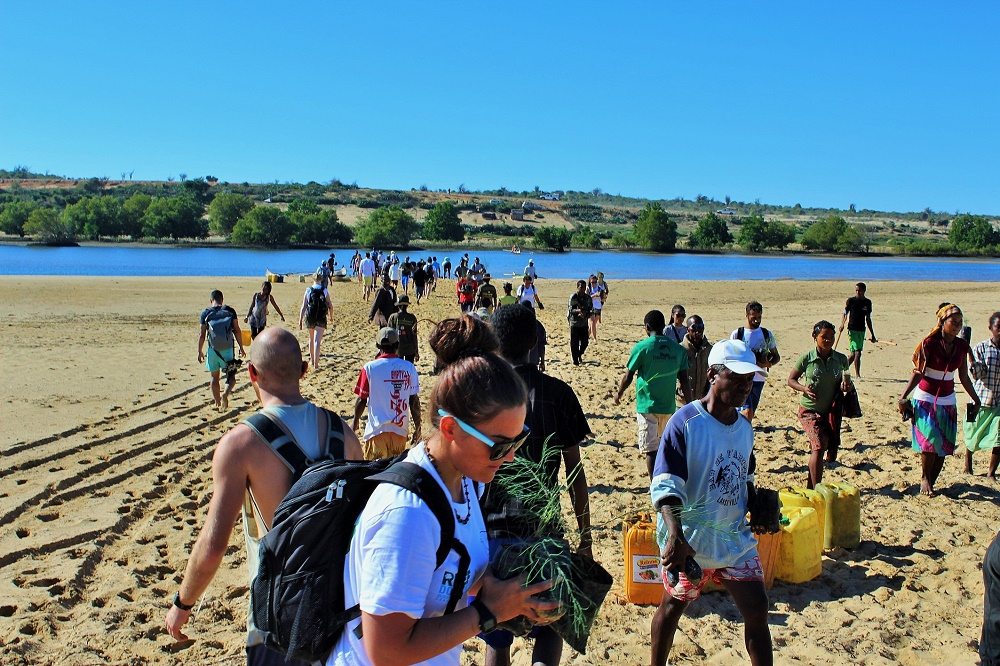
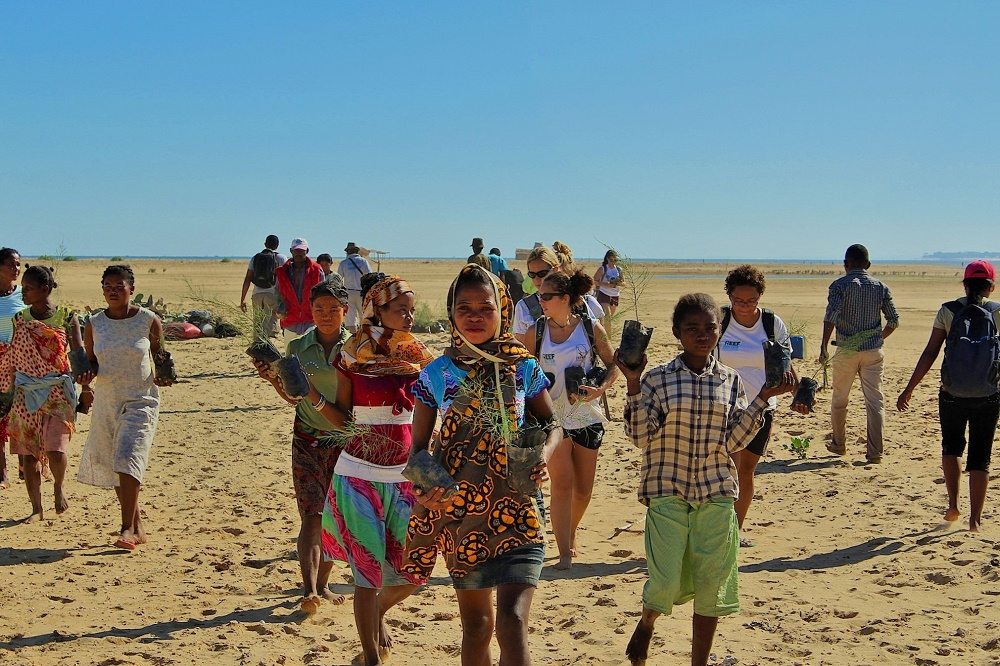
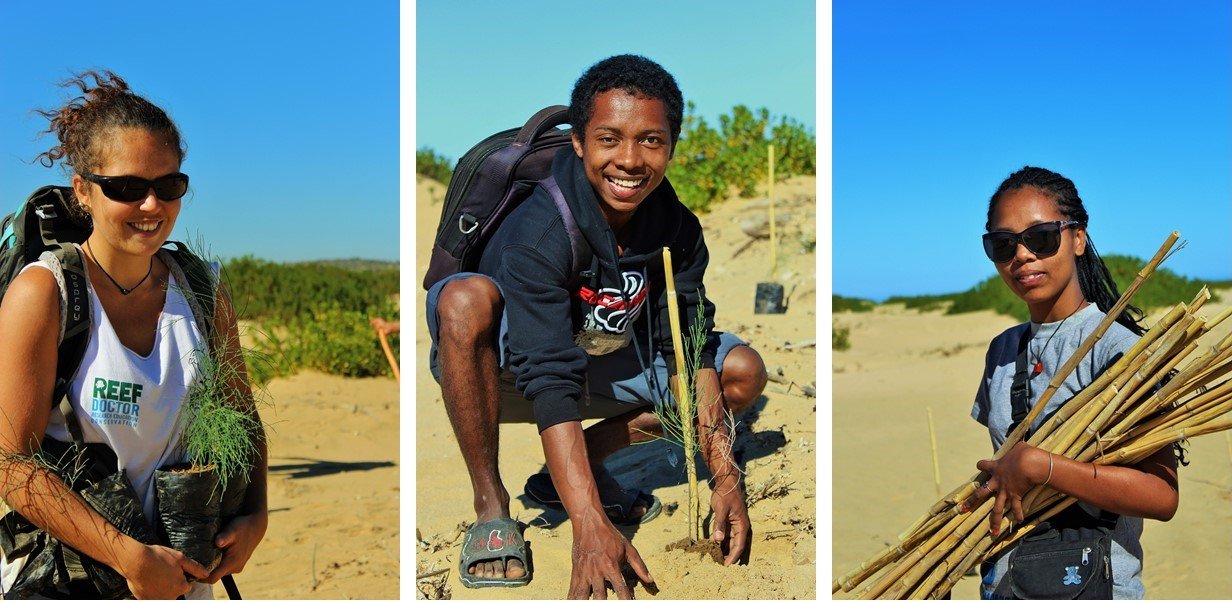
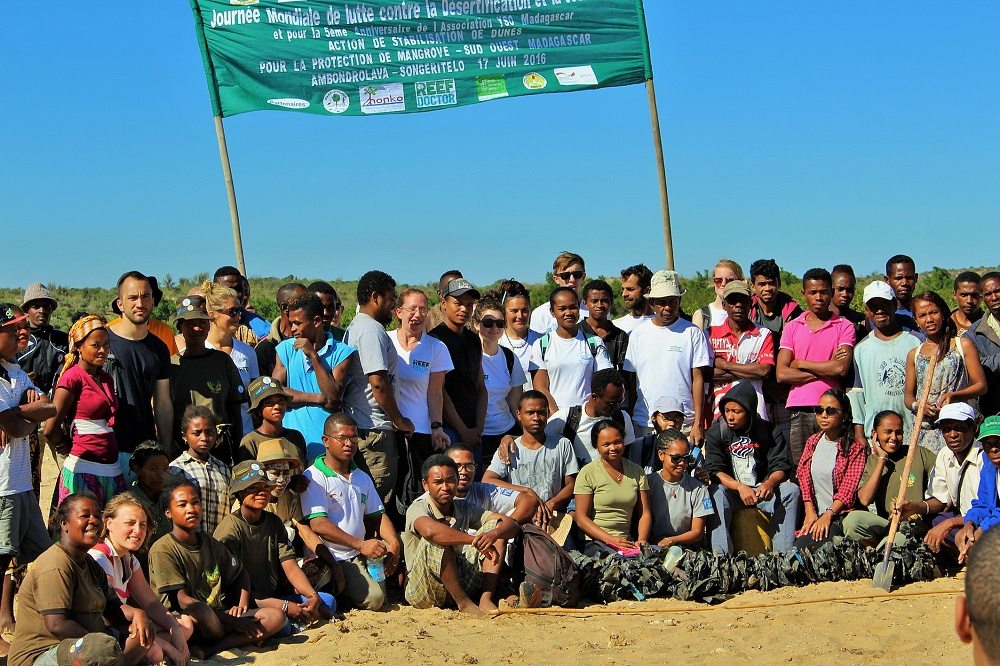
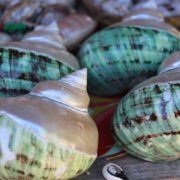
 Today is World Environment Day, run by the United Nations Environment Programme (UNEP). This year the theme is ‘Go wild for life: zero tolerance for the illegal wildlife trade’. During the early 1990s $160 billion was spent annually on the wildlife trade; it is considered the second biggest threat to species survival (source: WWF). We decided to support UNEP’s theme this year by highlighting the issues involved with the sale and exportation of marine life, in particular the coral reef curio trade.
Today is World Environment Day, run by the United Nations Environment Programme (UNEP). This year the theme is ‘Go wild for life: zero tolerance for the illegal wildlife trade’. During the early 1990s $160 billion was spent annually on the wildlife trade; it is considered the second biggest threat to species survival (source: WWF). We decided to support UNEP’s theme this year by highlighting the issues involved with the sale and exportation of marine life, in particular the coral reef curio trade.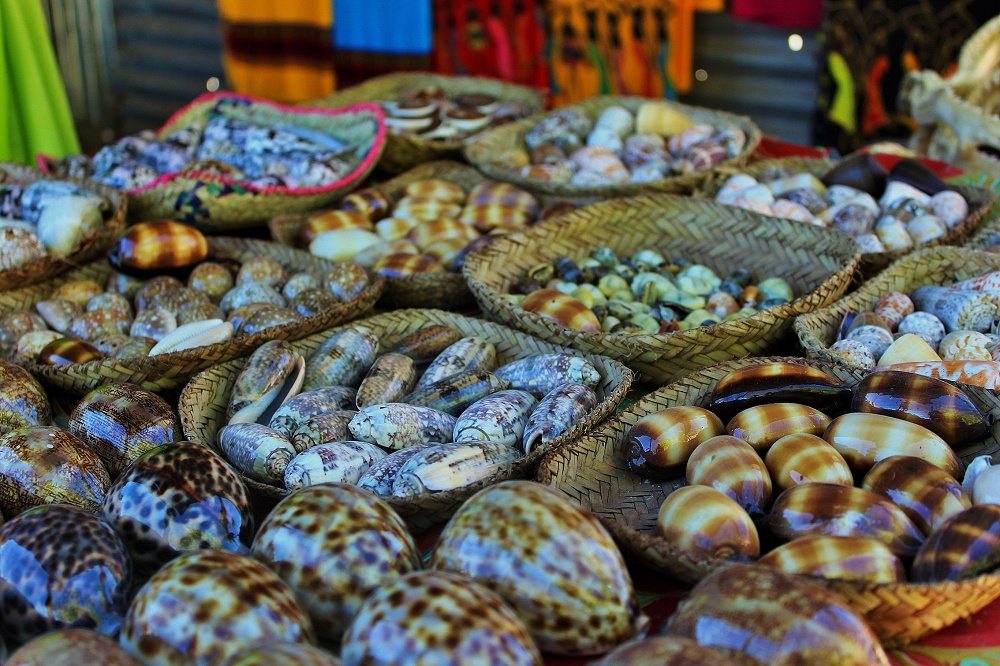
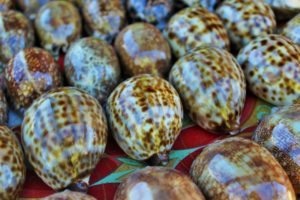 Firstly the empty shell that tourists buy once had an animal living in it. In the Toliara region of SW Madagascar many of the shells you see on sale are cowrie shells. They are very shiny and smooth, and look as though they have been polished. And they have, by the snail that lived inside it. Cowries cover their shells with the lobes of their mantle and the action of covering and uncovering the shell leaves the surface polished. When the shell is collected the animal dies. Cowries have been valued for centuries as ornaments because of their smooth surface and attractive colouring. Many of the bracelets and necklaces you see for sale on beaches contain cowrie shells. But they are not the only creatures collected for the curio trade. Dried puffer fish, seahorses and sea urchins together with many different species of shells including scorpion, triton and murex snails can also be bought regardless of how vulnerable that particular species is. The curio trade does not discriminate between vulnerable and abundant species.
Firstly the empty shell that tourists buy once had an animal living in it. In the Toliara region of SW Madagascar many of the shells you see on sale are cowrie shells. They are very shiny and smooth, and look as though they have been polished. And they have, by the snail that lived inside it. Cowries cover their shells with the lobes of their mantle and the action of covering and uncovering the shell leaves the surface polished. When the shell is collected the animal dies. Cowries have been valued for centuries as ornaments because of their smooth surface and attractive colouring. Many of the bracelets and necklaces you see for sale on beaches contain cowrie shells. But they are not the only creatures collected for the curio trade. Dried puffer fish, seahorses and sea urchins together with many different species of shells including scorpion, triton and murex snails can also be bought regardless of how vulnerable that particular species is. The curio trade does not discriminate between vulnerable and abundant species.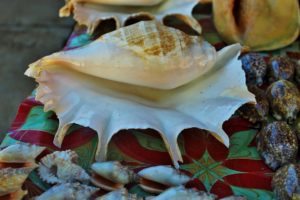 terials left behind by dead organisms perform many important ecosystem services such as beach stabilisation, provision of colonization surfaces for algae and encrusting organisms, and habitat creation (material for bird nests, home for hermit crabs etc.) Furthermore, shell material is continuously dissolved in most coastal areas resulting in elemental recycling back into the global marine carbon reservoir. Therefore, the removal of shells will lead to changes in local calcium carbon carbonate cycles, with large-scale biogeochemical consequences.
terials left behind by dead organisms perform many important ecosystem services such as beach stabilisation, provision of colonization surfaces for algae and encrusting organisms, and habitat creation (material for bird nests, home for hermit crabs etc.) Furthermore, shell material is continuously dissolved in most coastal areas resulting in elemental recycling back into the global marine carbon reservoir. Therefore, the removal of shells will lead to changes in local calcium carbon carbonate cycles, with large-scale biogeochemical consequences.
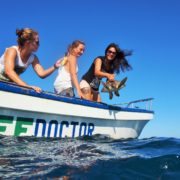
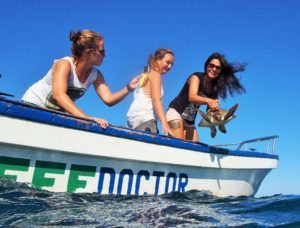 Today is World Turtle Day and here at Reef Doctor we focus heavily on turtle protection. There are seven species of turtle in the world, with four of these seven species classified as endangered according to the IUCN Red List of Threatened Species. In southwest Madagascar, five species occur naturally, however the most common type of marine turtle in the Bay of Ranobe is the Green Turtle (Chelonia mydas), so named because of the layer of green fat under the carapace (turtle shell). We also see the occasional Hawksbill turtle (Eretmochelys imbricata), a critically endangered species.
Today is World Turtle Day and here at Reef Doctor we focus heavily on turtle protection. There are seven species of turtle in the world, with four of these seven species classified as endangered according to the IUCN Red List of Threatened Species. In southwest Madagascar, five species occur naturally, however the most common type of marine turtle in the Bay of Ranobe is the Green Turtle (Chelonia mydas), so named because of the layer of green fat under the carapace (turtle shell). We also see the occasional Hawksbill turtle (Eretmochelys imbricata), a critically endangered species.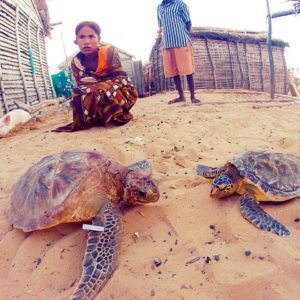 eef Doctor, with assistance from
eef Doctor, with assistance from 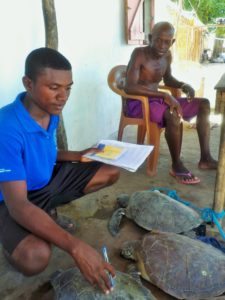 hed FI.MPA.MI.FA, a local association of fishermen and turtle hunters who were concerned about the sustainability of this resource. The result was signing into local law the first community-led marine turtle fishery regulation, a minimum size limit. Initially set at 50 cm curved carapace length, this size limit was later increased to 70 cm, to fully protect juvenile turtles that have not reached sexual maturity.
hed FI.MPA.MI.FA, a local association of fishermen and turtle hunters who were concerned about the sustainability of this resource. The result was signing into local law the first community-led marine turtle fishery regulation, a minimum size limit. Initially set at 50 cm curved carapace length, this size limit was later increased to 70 cm, to fully protect juvenile turtles that have not reached sexual maturity.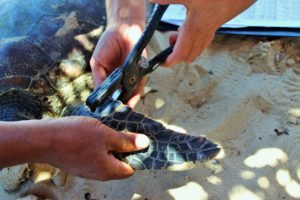 What’s it like tagging a turtle? At Reef Doctor volunteers have the opportunity to tag turtles. It’s a simple procedure to perform and once you get over the squeamishness, it’s not so bad. For those of us who worry about hurting the turtle (yes the non scientists!) it helps to bear in mind that despite the turtle having a really terrible day being caught (often with a spear gun) and dragged on land to be tagged, at least they don’t end up in a cooking pot!
What’s it like tagging a turtle? At Reef Doctor volunteers have the opportunity to tag turtles. It’s a simple procedure to perform and once you get over the squeamishness, it’s not so bad. For those of us who worry about hurting the turtle (yes the non scientists!) it helps to bear in mind that despite the turtle having a really terrible day being caught (often with a spear gun) and dragged on land to be tagged, at least they don’t end up in a cooking pot!